
If you are disabled person or person with reduced mobility, and you are going to travel by air, please note that you are entitled to assistance when traveling by air to and from the European Union.
Not only permanently disabled person can exercise this right. Anyone who suffers from reduced mobility, for example due to age, injury or disability may receive such assistance.
Before traveling
Before traveling, you should think about what kind of help may be needed, and familiarize yourself with the safety of the airline. Airports, airlines and travel agencies are required to provide clear and understandable information relating to the safety rules. The information should be made public in a form that they are available to all passengers.
In most cases, the safety rules provide that persons who are not able to fasten their seatbelts, to leave their seats and get to the emergency exit must be accompanied by someone able to give them the necessary assistance. This also applies to passengers who have difficulty with breathing, consumption of food, the use of the toilet, or taking medication.
In the case of smaller aircraft there may be limitations on the number of disabled travelers on board at the same time.
Airlines can refuse to make a reservation for disabled persons only in cases where safety rules do not allow for the carriage and size of the aircraft or its doors makes the embarkation or carriage of that person physically impossible. In the case of such a refusal airlines must inform passengers of the reasons for the refusal.
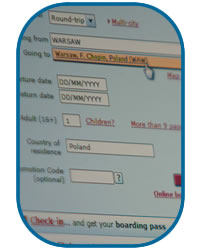
Booking
When booking, you should always inform your airline, travel agent or tour operator that you need assistance while traveling.
The need for assistance must be submitted no later than 48 hours before the flight, but also in the case of late notification, or even its absence, airlines and airport staff have a duty to take care to your desired protection. Booking can be made by phone, in person or via the Internet. When booking via the Internet, the detailed explanation of your needs may be impossible and, therefore, passenger must also contact the airline, its agent or a tour operator. This should not result in additional cost.
Upon booking, you should ensure that your needs are properly understood. You can ask for written notification of assistance or confirmation on the ticket or itinerary. It will help you file a claim, if the right help is not given.
Medical certificates
If traveling by plane can affect your health, you should have a medical certificate authorizing the flight.
If you are submitting need to help, you do not need to submit any certificates.
If you carry liquid medicine or medical equipment in your hand luggage, you shall hold a medical certificate to allow the transfer through the security control.

Arriving at the airport
Before traveling, you should refer to the plan of the airport and the distribution of its amenities. The information you can get by contacting the airport or by searching the Internet.
Airports need to determine the point at which people with disabilities can seek assistance. These points can be found at the entrance to the terminal, parking, close to bus or train stations providing access to the airport. If your need of assistance was reported, this information will be transferred to the airport.
Upon arrival at the terminal, you should go to the designated help-point or the check-in desk. Airlines shall determine how long before the flight you should arrive at the check-in desk.
Very often, security considerations do not allow parking in the immediate vicinity of the terminal, therefore, you should stop at the nearest parking lot. The parking lot should be located in designated areas for people with disabilities and the points where you can turn for help. In some cases, airports also provide parking spaces for passengers requiring assistance and being non-disabled people. Inputs for pedestrians should be appropriately marked and fully accessible to all users.
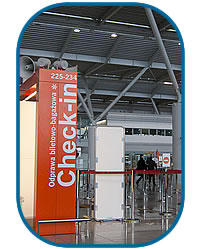
Check-in (web check-in)
At the time of check-in, please remember to confirm previously made notification of assistance.
If you make the check-in electronically in advance via Internet, they should have the opportunity to confirm the notification of assistance and choose the most suitable place.
If you are using the self check-in desks at the airport, port staff should be able to provide appropriate assistance in this regard.
If you use a wheelchair, most likely you will be able to stay on it until you leave the waiting room depending on the type of disability and airport infrastructure. If this is not possible, your wheelchair will be checked in and you will use the wheelchair provided by the airport.
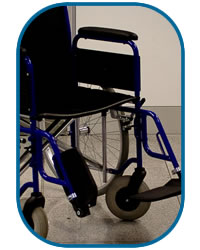
Mobility equipment
Air carriers in addition to the transport of medical equipment are also required to transport no more than two pieces of mobility equipment per disabled person or person with reduced mobility, including electric wheelchairs, (requires notice 48 hours prior departure due to possible limitations of space on board of an aircraft).
Please, every time you need to take medical equipment on board - check if there are any restrictions relating to the safety or security of civil aviation in the transport of certain materials or equipment used by you, such as oxygen cylinders.
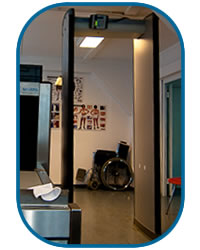
Security check
All passengers and their luggage, including equipment used to move, shall be screened. Security check is carried out in a way that takes into account the degree and type of disability.
If you are not able to walk independently by the magnetic gate, you will be subject to a hand, possibly with a hand-held metal detector. If the screener will not be able to properly perform the inspection, you will be asked to go to a separate room in the implementation of personal control by a person of the same sex in complete privacy and respect your dignity.
The equipment which allows you to move in accordance with law will be checked manually or by X-ray equipment.
Personnel carrying out security checks are trained in the correct operation of the control of persons with disabilities and persons with reduced mobility. Therefore, the control should be performed with regard to your disability and not cause additional inconvenience.
Please cooperate fully with the security services, and inform about your disability, it helps to avoid confusion and to make the control runs smoothly.

Moving through the airport
The airport operator is responsible for providing assistance for disabled passengers and persons with reduced mobility to reach the aircraft. This service is free of charge and includes, for example to check-in and pass through security.
The minimum range of services and support available at the airport are set out in Annex 1 to Regulation 1107/2006 . Usually airports have clear signs and their infrastructure includes additional facilities for disabled passengers such as properly designed toilets, telephones and elevators.
St the waiting rooms seats should be reserved specifically for people with reduced mobility. They should be clearly marked and situated near the information point and suitably adapted toilets.
Each airport provides information about flights. Plates or screens should be designed and positioned in such a way that the visually impaired and wheelchair users can see them without problems.
Some airports do not use voice flight information. If you can not read the information about flight connections on the boards or information screens, airport staff should provide you with the correct information.
Passengers with disabilities and persons with reduced mobility will typically be seated on board the aircraft first. If you are not able to climb stairs, then the way to help you get on board will depend on the situation and the equipment remaining at the disposal of the airport. To help you get on board personnel can use specially adapted chairs with straps (often used for smaller aircraft) or special elevators.
If the aircraft is located next to the terminal building and the jet bridge is provided – you will have an easy access directly into the cabin.
If you can not go on your own to your seat then you will be transported in a wheelchair designed for this purpose.
You may also be transported by bus to the plane. Buses used in airports are usually low-floor and provide easy access for passengers with disabilities.

Getting on board
The movement on board may be difficult due to the size of the passenger cabin.
Wheelchairs can not always be placed in the cabin and are usually transported in the hold. If you use a wheelchair equipped with rechargeable batteries, before you travel please make sure that these are "Dry batteries" that are allowed to transport without any additional restrictions. For staff performing safety checks can be useful to put in a wheelchair information on how the equipment works and which batteries it runs on.
The air carrier is required to take all reasonable efforts to arrange seating which meet the needs of people with disabilities or reduced mobility However it is a subject of safety requirements and availability.
If you are accompanying by your own assistance, the air carrier is obliged to make every effort to give such person a seat next to you.
Training of staff
Providing direct assistance to disabled persons and persons with reduced mobility staff hired at the airports and by airlines must be trained and have knowledge in providing assistance to persons with various disabilities or mobility impairments.
However, this does not mean that staff will have expertise on all types of disability and know how to deal with all equipment used by passengers with disabilities or persons with reduced mobility. Please note that the staff at the airport or on board an aircraft may you’re your clarification or guidance how to use your equipment to provide an appropriate assistance.
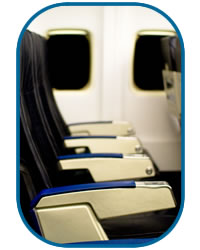
The movement on board may be difficult due to the size of the passenger cabin.
Wheelchairs can not always be placed in the cabin and are usually transported in the hold. If you use a wheelchair equipped with rechargeable batteries, before you travel please make sure that these are "Dry batteries" that are allowed to transport without any additional restrictions. For staff performing safety checks can be useful to put in a wheelchair information on how the equipment works and which batteries it runs on.
The air carrier is required to take all reasonable efforts to arrange seating which meet the needs of people with disabilities or reduced mobility However it is a subject of safety requirements and availability.
If you are accompanying by your own assistance, the air carrier is obliged to make every effort to give such person a seat next to you.
Information on board
Newer planes are better suited to the needs of people with disabilities. There are some features like signage, lighting and special equipment. Some also have a wide-body aircraft toilets specially adapted for the disabled.
Air carriers are also required to pass on relevant information about the flight for all passengers. If you need an information provided in an appropriate form for you, please remember to request the crew.
Seat
If your seat is chosen before the flight, the air carrier should be possible to book the most convenient place. If the seats are chosen at the time of check-in, staff should offer you the most convenient place that will allow you to move freely, with a movable armrest or more legroom.
If you have mobility problems, for security reasons you will not be able to sit in places where access would be potentially difficult for emergency equipment or the efficiency of the evacuation of passengers could be affected. This includes primarily at the door of escape, which often have more legroom.
Sometimes it may happen that passengers with disabilities or persons with reduced mobility will need more than one seat on the plane. In such cases, carriers will typically charge an additional fee, but can offer a special discount.
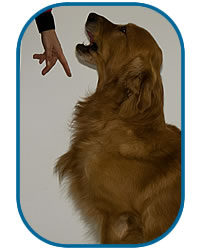 Guide dogs
Guide dogs
The carriage of guide dogs are allowed in the cabin of the aircraft with no extra charge. The Airline’s restrictions of transport of animals do not apply to guide dogs.
Guide dogs with larger sizes can travel sitting on the floor, while the smaller may sit on the laps of their owners.
Useful information
Please note that it is very important to notify the air carrier, its agent or a tour in advance of the required assistance related to your disability. Often, it is also possible to request assistance in advance directly to the airport. You are advised to check the airline’s and airport’s websites for further information.
If you are not satisfied with the level of assistance received, you can file a complaint at the airport . When the answer to your complaint would be also not satisfactory to you or you find that right has been infringed (Reg. 1107/2006 it is possible to make a complaint to acting on behalf of the President of the Civil Aviation Authority - Comission on the Passenger Rights (KOPP)
Guide is based on information compiled by the Equality and Human Rights Commission. "Your rights to fly - what you need to know. A step by step guide for disabled and less mobile passengers. July, 2008. "
www.equalityhumanrights.com/airtravel
